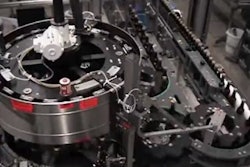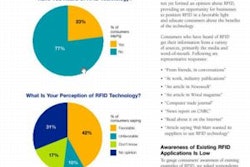Titled "Bar Code Label Requirements for Human Drug Products and Biological Products," the measure is designed to protect patients from preventable medication errors, and to reduce the cost of health care.
An FDA press release reports that the final rule applies to most drug manufacturers, repackers, relabelers, private-label distributors, and blood establishments. New medications covered by the rule will have to include bar codes within 60 days of their approval. Most previously approved medicines and all blood and blood products will have to comply within two years.
"Bar codes can help doctors, nurses, and hospitals make sure they give their patients the right drugs at the appropriate dosage," said Health & Human Services Secretary Tommy G. Thompson. "By giving health care providers a way to check medications and dosages quickly, we create an opportunity to reduce the risks of medication errors that can seriously harm patients.
The FDA rule calls for the inclusion of linear bar codes on most prescription drugs and on certain over-the-counter drugs commonly used in hospitals. Each bar code for a drug will have to include, at a minimum, the drug’s National Drug Code number. That information will be encoded within the bar code on the product label or package copy. Companies may also voluntarily include lot number and expiration date.
The rule requires the use of machine-readable information on container labels of blood and blood components intended for transfusion. These labels, which are already used by most blood establishments, contain FDA-approved, machine-readable symbols identifying the collecting facility, the lot number relating to the donor, the product code, and the donor’s blood group and type.
In use, bar codes on drugs could work with a bar-code scanning system and computerized database. When a patient is admitted to a hospital, the facility gives the patient a bar-coded identification bracelet to link the patient to his or her computerized medical record.
Bar-code scanners or readers at the hospital could be linked to the computer system of electronic medical records. Before a health care worker administers a drug, the patient’s bar code would be scanned. That allows a computer to access the patient’s computerized medical record. The worker then scans the drug’s bar code to inform the computer which drug is being administered.
The computer then matches the patient’s medical record to the scanned drug to ensure it matches. If not, the computer sends an error message, and the health care worker would investigate if the cause of the problem is the wrong patient, dose of drug, wrong drug, wrong time to administer the drug, or if the patient’s chart has been updated and the prescribed medication has changed.
In a study conducated at a Veterans Affairs Medical Center employing such a bar-code system, 5.7 million doses of medication were administered to patients, with no medication errors, according to H&HS.
FDA estimates that benefits of the ruling could include:
o Helping with inventory control for drug manufacturers, wholesalers, and pharmacists, as well as efficiencies in ordering and billing.
o Hospitals are expected to avoid litigation associated with preventable adverse events, reduce malpractice liability insurance premiums, and increase receipts from more accurate billing procedures.
FDA initially proposed bar-code requirements last March. Since then, comments from hospitals, health care professionals, trade and professional associations and others showed support for the approach to improving patient safety and promoting quality health care. For more information, visit www.fda.gov.
























